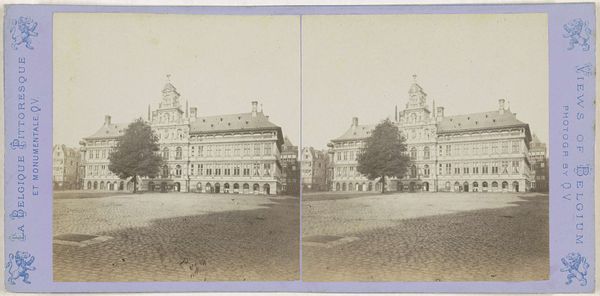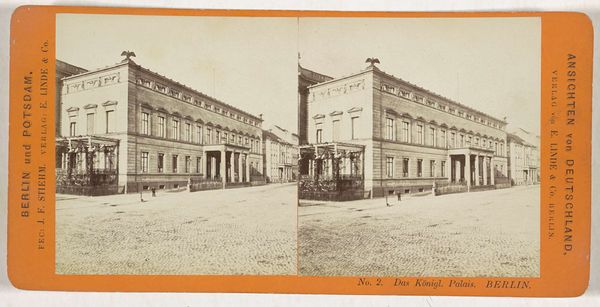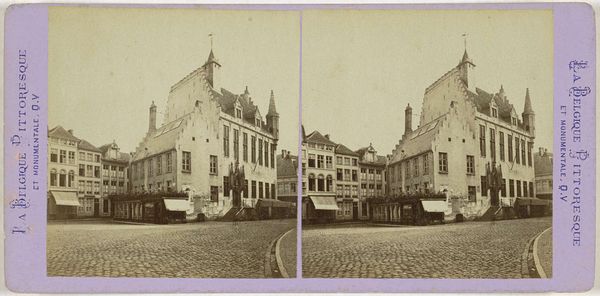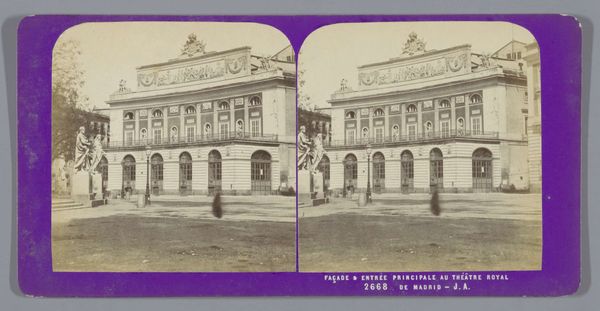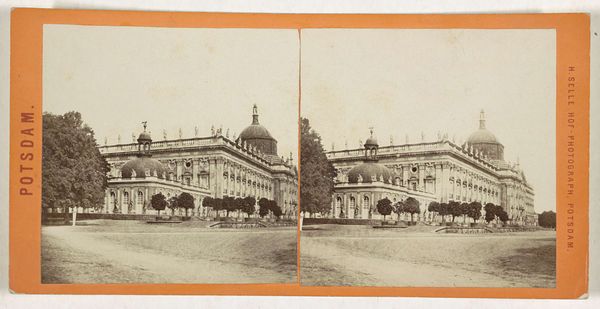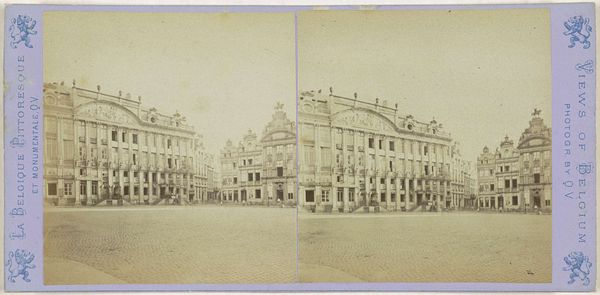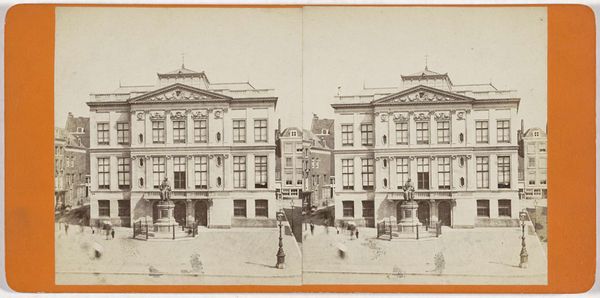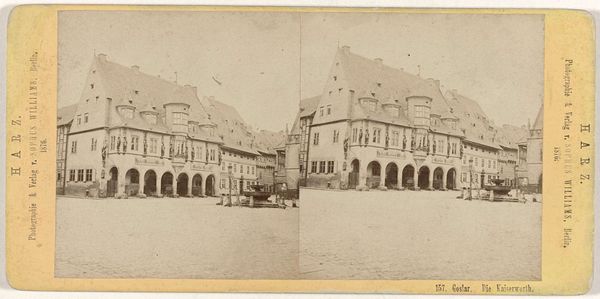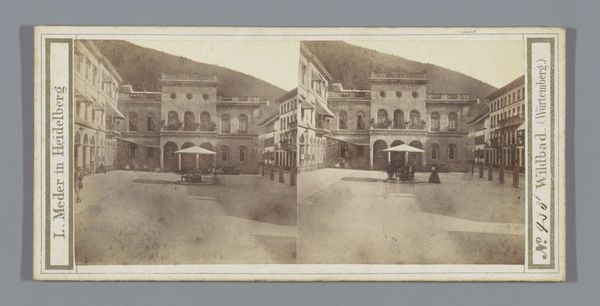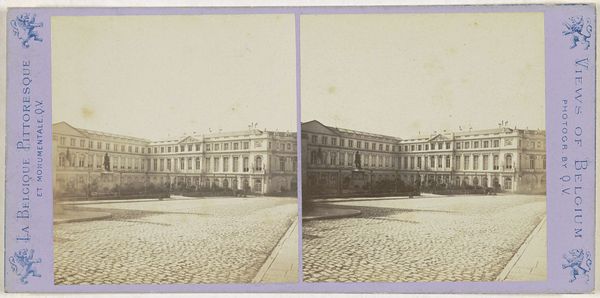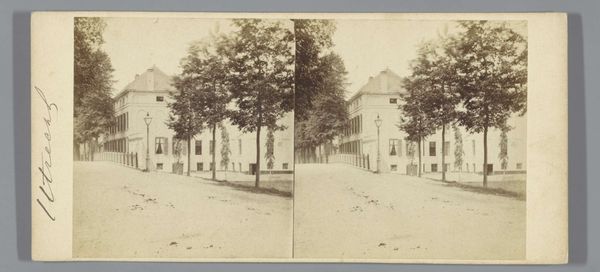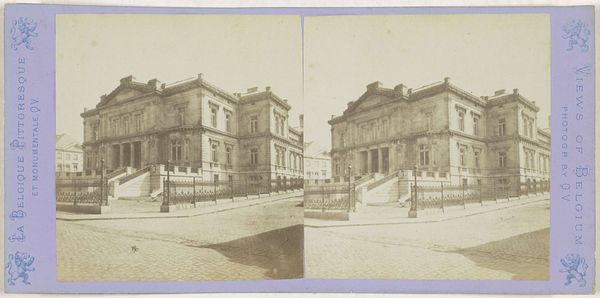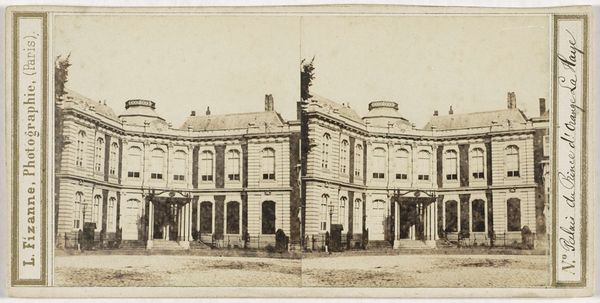
print, photography, site-specific, albumen-print, architecture
# print
#
photography
#
coloured pencil
#
ancient-mediterranean
#
site-specific
#
cityscape
#
albumen-print
#
architecture
#
realism
Dimensions: height 85 mm, width 175 mm
Copyright: Rijks Museum: Open Domain
Editor: We're looking at a print titled "Stationsgebouw van Gare du Nord in Brussel," dating from 1866 to 1870. It’s currently held at the Rijksmuseum and attributed to Jules Hippolyte Quéval, created using the albumen print process. I’m immediately struck by the formality and rigid symmetry. What do you see in this piece? Curator: The immediate compositional aspect that arrests me is the rigorous application of linear perspective. The artist meticulously arranges the architectural details, like the repeating arches and window placements, to converge at a vanishing point, reinforcing a sense of depth and structured space. It adheres strictly to principles of realism and architectural representation, using light and shadow. The materiality—the albumen print—further affects the tonality, with subtle gradations lending a softened effect to the hard architectural lines. Do you notice how the symmetry affects the viewer's perception of stability and order? Editor: Yes, definitely. The symmetry and perspective create a powerful sense of order, almost like a stage set. Does the print's inherent format--its two near-identical images presented side-by-side as if viewed through a stereoscope--further underscore this pursuit of rationalized composition and stable perspective? Curator: Indeed, the stereoscopic format inherently underscores these principles. The dual perspective creates a more immersive, three-dimensional experience, heightening our awareness of the spatial arrangement and solidifying the formal qualities of the architectural subject. It's not merely a representation of the building, but also a demonstration of photographic technology’s ability to simulate reality through precisely controlled visual means. It reminds us of the intersection between art, science, and perception during that era. Editor: It’s amazing to think how much can be gleaned from simply analyzing the structure and composition. I didn't really appreciate how integral the printing process itself was to experiencing this sense of constructed depth. Curator: Exactly. Formal analysis helps illuminate the dialogue between intention and technique in ways that deepen our understanding of the artwork.
Comments
No comments
Be the first to comment and join the conversation on the ultimate creative platform.
